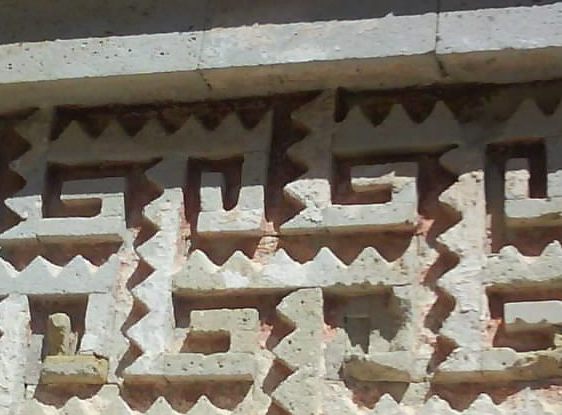Mexico - Oaxaca
Farwell, a well travelled friend I met in Montana told me his favourite place in Mexico was Oaxaca and as I have made my way south most people who had been really liked the place. At this time of year (January) it has an almost perfect climate with Canadians travelling to it to escape the cold and Argentineans to escape the midsummer heat.

Another Day In Paradise - Oaxaca Main Plaza, The ZocaloThe large main plaza, Zocalo is a lively, colourful place with plenty of activity and entertainment from orchestras one night to Peruvian panpipe players another. Everyone gathers there in the evening, children play with giant cylindrical balloons outside the cathedral while various traditional musicians busk at the restaurants and living statues pose for photos and give you a fortune card in exchange for dropping a few coins into their collection boxes.

Long Cylindrical Balloons Outside The Cathedral
One perfect tropical evening in the Zocalo I was watching an excellent group of musicians playing traditional Peruvian music with panpipes, flutes and guitars thinking that life couldnt get any better when a street trader came round selling cheesecake. CHEESECAKE without having to move, Viva Mexico!

Bike Stored In The Hostel Courtyard (www.mezkalitohostel.com)
There was an outcry as fuel rose by 2 pesos with concern that it would push up the price of basic food, bus journeys and everything else. It now costs 9 peso per litre (48p per litre or $2.74 per US gallon if I got my sums right), still cheap by European standards.
An English language Mexican newspaper reported that Mexico now headed the list of obese nations. Maybe there is a downside to having street dealers pushing their cheesecakes onto a hedonistic populace innocently out for a good time and in moments of weakness succumbing to temptation. One of the pushers looked like he was a cheesecake addict himself, selling no doubt to feed his own habit.

Living Statues
Monte Alban, on the outskirts of Oaxaca is a 2400(ish) year old Mesoamerican archaeological site that I visited on a tour rather than ride the bike through the city traffic and back. The tour included a guide who said the now bare walls were once covered in red stucco and showed us a small sheltered corner which still had traces of red paint. He explained that the colouring from red oxide was vastly superior to modern paints as this paint was applied 5000 years ago (twice as old as the wall!). All the time he was telling his tale he was tapping the wall with a stick and you could see flakes of paint coming away as he did so.

Monte Alban
The bike was due another service so I got the hostel manager to write out a note in Spanish that I could memorise to go round the covered carparks asking if I could do the work there. The first two refused, worried about any mess I might leave although I had plenty of cardboard and newspaper to catch any spillage. The third one said it would be ok so I popped back for the bike and did the job sheltered from the sun. I was charged 20 peso (just over a pound or $1.54), the normal cost of two hours parking although I gave the guy an additional 100 peso for letting me do the service there. I then rode round stopping at a number of waste bins to get rid of the paper and large sheet of cardboard. That makes 36,000 miles I have done on the trip so far.

The 6pm Flag Lowering Ceremony, Main Plaza, Oaxaca
The Zapotec town in Mitla, an hour or so ride from Oaxaca reached its peak from 750AD to 1521AD until the Spanish destroyed it and used some of the stones to build the nearby church. Mitla is unique among Mesoamerican sites for the elaborate and intricate mosaic fretwork and geometric designs that cover tombs, panels, friezes and even entire walls. These mosaics are made with small, finely cut and polished stone pieces which have been fitted together without the use of mortar.

Mitla Zapotec Ruins With Restored Red Stucco

The Unique To Mitla Site Wall Decoration
Santa Maria Del Tule has the worlds largest tree in the grounds of the church. I think this is the second largest tree in the world I have seen as different methods of measurement are used. The Tule tree, a Montezuma Cypress has the largest girth of trunk, 54 metres (164 feet) and dwarfs the nearby church. It is over 2000 years old so it was around when the Zapotec civilisation was flourishing in the region. The General Sherman is the largest tree by volume, a Giant Sequoia in California. The tallest tree, a Coast Redwood at 115.6 metres (379.3 feet) is also in California.

The Biggest Tree In The World, Tule
